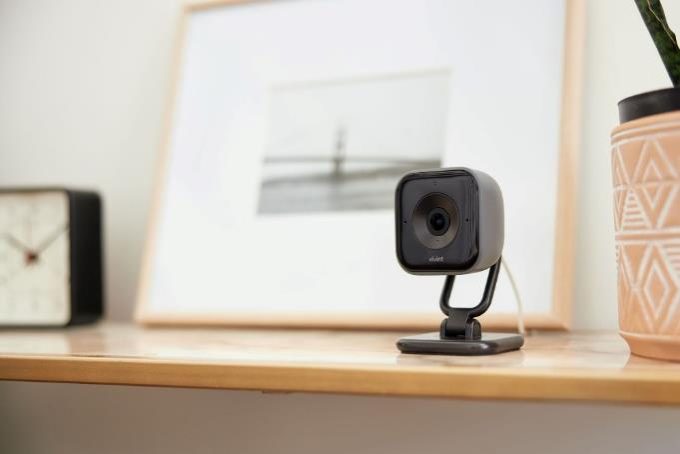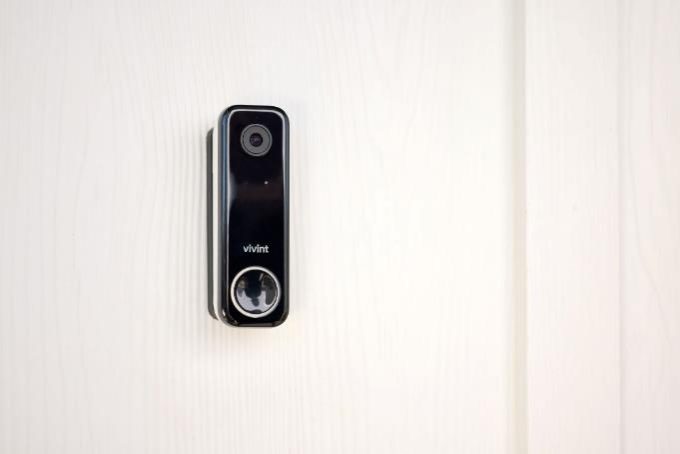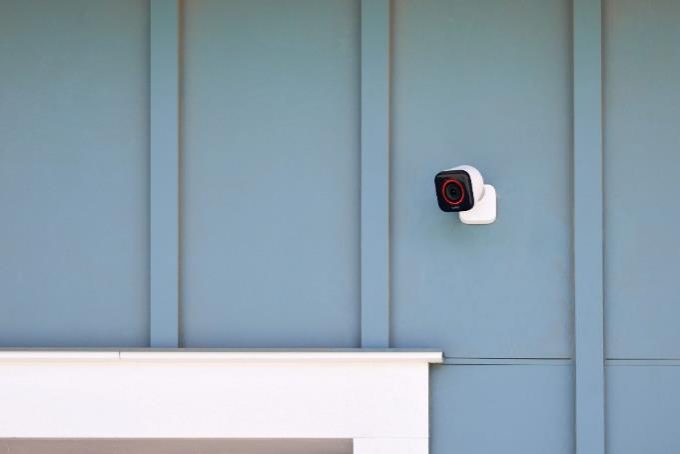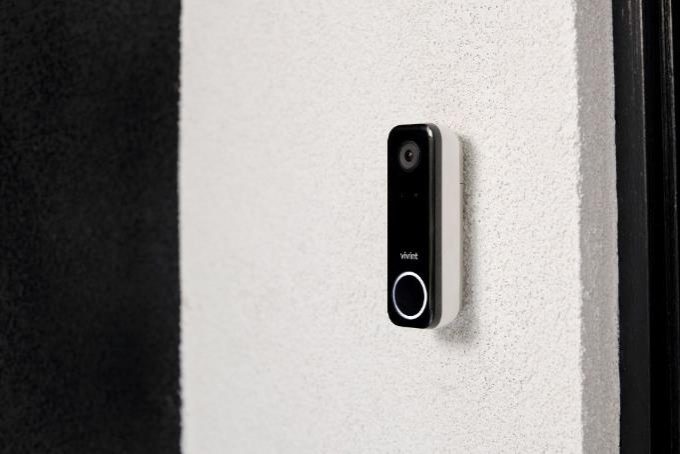Views: 8
Advanced Features of Modern Security Cameras, Smart Surveillance: Exploring the Home security systems can be important for keeping your home safe. Through the years, companies have developed new security camera features to better protect you and your family. Modern cameras can also integrate with other smart home devices to combine safety and convenience.
In this guide, you’ll learn everything you need to know about security cameras and how to choose the best camera for your security needs. We’ll talk about the different types of cameras, the pros and cons of Wi-Fi and wired systems, and the benefits of other features. Then, we’ll help you evaluate your situation to find the perfect camera.
Types of security cameras
There are many security camera types, each with unique strengths and weaknesses. Learning about the different features of home security cameras sets the foundation for finding the right one.
Advanced Features of Modern Security Cameras
Outdoor security cameras
As the name suggests, outdoor security cameras are best used outside. These cameras are weather-resistant and designed to withstand the elements like rain, wind, and snow. They also typically have night vision capabilities to monitor your property even when it’s dark outside.
Indoor security cameras
Indoor security cameras are usually smaller than outdoor cameras and are designed to blend into your home’s interior. Popular features include motion tracking and facial recognition. Indoor security cameras can help you spot intruders but can also be used to check in on pets or children while you’re away from home.
Dome cameras
Dome cameras–named for their dome-shaped cover– are most often found in stores and business environments. But they can be good choices for homeowners who want more discrete cameras. These cameras also offer a 360-view, making them perfect for those who need to see a full room.
Floodlight cameras
Floodlight cameras are outdoor security cameras with built-in floodlights. These cameras specialize in nighttime visibility. The floodlights can be motion-activated and light up an area when movement is detected. These lights can deter burglars and improve lighting for the camera.
Spotlight cameras
Like floodlight cameras, spotlight cameras (including the Acme SpotlightPro) have a built-in light. Unlike floodlights, the spotlights have more focused light. They are better for lighting specific areas of interest, like a doorway, porch, or path.
Video doorbells
Video doorbells are a specific type of security camera that combines the function of a traditional doorbell with the technology of a surveillance camera.
Video doorbells are designed to secure your front door area. Often, these doorbell cameras record high-resolution video of who comes to your front door. Some cameras have a wide enough scope to record your front porch, yard, and even the street in front of your house.
Many video doorbells, such as Acme’s Doorbell CameraPro, also use either person or motion detection to determine when to begin recording or alert the homeowner. Most video doorbells send homeowners smartphone notifications when someone approaches the door. They can even talk to the visitor via two-way audio.
Connectivity options: Wi-Fi vs. wired systems
In the past, installing home security cameras meant running wires throughout your home. Today, many cameras have wire-free devices that use Wi-Fi. But wired systems still have some advantages. Let’s go over the basics of each option.
Wi-Fi systems
The biggest benefit of Wi-Fi systems is how easy they are to install. These cameras also have more flexibility in where they can be placed, and they’re easy to move. Wire-free cameras also eliminate the hassle of organizing and hiding wires throughout your home.
There are some drawbacks, though. Cameras using Wi-Fi depend on a good wireless network connection. Slow internet could mean poor security camera performance. Also, without wires, these cameras are battery-powered. These cameras could require regular maintenance, depending on their battery life.
Wired systems
More traditional wired security cameras are known for their reliability. These cameras are better for security systems covering large areas since they don’t require a strong signal.
However, these can be harder to install than wireless cameras. While homeowners can try to DIY the installation, wiring complexity may take a lot of work for beginners. That’s why Acme offers professional home security camera installation and will install your other Acme smart home devices as well.
When choosing between Wi-Fi and wired systems, consider the size of the area you want to cover and how often you may want to move your cameras.
Using POE technology
Power over Ethernet (POE) technology has pushed the limits of home security solutions. Previously, many systems needed hardwire connections to power and internet. With POE, security cameras can access the internet and power through one wire.
POE technology can bring several benefits to wired systems, such as:
For businesses and homeowners looking for the reliability of a wired system with the flexibility of a Wi-Fi system, a POE system may be a happy medium.
Network video recording (NVR) and digital video recording (DVR)
The next decision you need to make when designing your surveillance system is choosing between an NVR and a DVR system for video recording and storage.
DVR systems are typically a network of physically connected cameras. Similar to other wired systems, this can limit the locations where cameras can be placed. DVR security systems also produce lower-resolution recordings. However, they are normally the cheaper option.
NVR security systems, on the other hand, share information over a local network. They generally record high-quality videos and have more placement flexibility. NVR systems may also come with special features like video analytics and remote viewing.
Advanced imaging features
Modern security cameras come with a range of advanced imaging features, like recording HD video, Ultra HD video, and even 1080p HD video, depending on the device. Some of these features include:
Smart home integration
As home automation systems become more popular, it also becomes more important for cameras to integrate with smart home systems. Cooperation between security cameras and other smart home devices can protect your home in a way that’s as convenient as possible.
For example, Acme offers security cameras that integrate with the broader Acme smart home system, including lights, locks, and thermostats, and you can control them all from one hub.
Smart security systems also allow for remote monitoring. Homeowners can receive security alert notifications and watch live or recorded video footage on their smartphones.
Some modern security cameras are also compatible with voice-controlled smart assistants like Amazon Alexa and Google Home. Users can control their camera settings and storage with simple voice commands.
Smart home integration is essential for making home security systems simple to control and offering homeowners peace of mind.
Choosing the right features for your security needs
Every security camera has unique features, and every home has unique security needs. The next section will help you determine what to consider in order to find the best security camera for your needs.
Assess your environment
First, look at the environment where you want to install your security system. Consider factors such as the area’s size and the lighting. If the area is large, look for a camera with pan-tilt-zoom abilities. This lets you cover the entire area with just one camera.
If the area has poor lighting or you need to record it at night when it’s dark, color night vision might be an essential feature to prioritize.
Determine key functionalities
What other features are most important to you in a security camera system? If you travel regularly, you might prioritize remote access and notifications. Receiving real-time alerts from your security system can reduce the stress of leaving your house unattended.
Homeowners who also care about deterrence may want a spotlight camera. These cameras’ motion detection capabilities can detect potential burglars and light up when they approach.
Select connectivity options
Next, choose between a wired and wire-free system. Opt for a wired system if you need a stable connection that won’t be interrupted if your internet cuts out. For easier installation or placement flexibility, look into wireless security cameras instead.
Evaluate your storage needs
Security cameras offer different options for data storage. One option is local storage, which includes keeping data on a microSD card or a hard drive. With local storage, you can access your data offline, which also keeps your data more private than cloud storage.
On the other hand, cloud storage makes it easy to increase your storage capacity. However, cloud storage often comes with a usage or subscription fee, which can get expensive in the long run.
Look at compatibility with over devices
If you already have a smart home system, your home security cameras need to be compatible with your other smart home devices if you want to control them all in one place. Buying all your security system components from one provider is the best way to make sure all your devices work together.
Acme offers a comprehensive system of smart security and home automation devices. You can control these devices from one hub and access them remotely.
Find the best security camera with Acme
Home security cameras have come a long way. Modern security cameras can record high-resolution videos and include many other special features. From motion detection to facial recognition, each camera offers specialized security for a variety of needs.
Acme security experts are here to help you choose a security camera that suits your space. We can also help you create a complete smart security system, and a Smart Home Pro will install it all for you, too. We’re dedicated to giving you the peace of mind that comes with having a safe and secure home.
AI-powered security cameras, 4K security camera resolution, security cameras with facial recognition, night vision security cameras, motion detection security cameras, cloud storage for security cameras, security cameras with two-way audio, PTZ (pan-tilt-zoom) security cameras, remote access security cameras, Wi-Fi enabled security cameras, intelligent video analytics, thermal imaging security cameras, license plate recognition cameras, security cameras with sound detection,
home automation security cameras, security cameras with smart alerts, geofencing security cameras, heat-sensing security cameras, waterproof outdoor security cameras, security cameras with digital zoom, battery backup for security cameras, security cameras with privacy shutters, encrypted video security cameras, security cameras with color night vision, biometric-enabled security cameras, security cameras with human detection, wireless security cameras with app control,
smart home integration for cameras, edge storage security cameras, infrared security cameras, high-definition security cameras, object tracking security cameras, security cameras with scheduling options, 360-degree security cameras, video doorbell security cameras, multi-sensor security cameras, plug-and-play security cameras, security cameras with built-in alarms, advanced image processing cameras, eco-friendly security cameras



